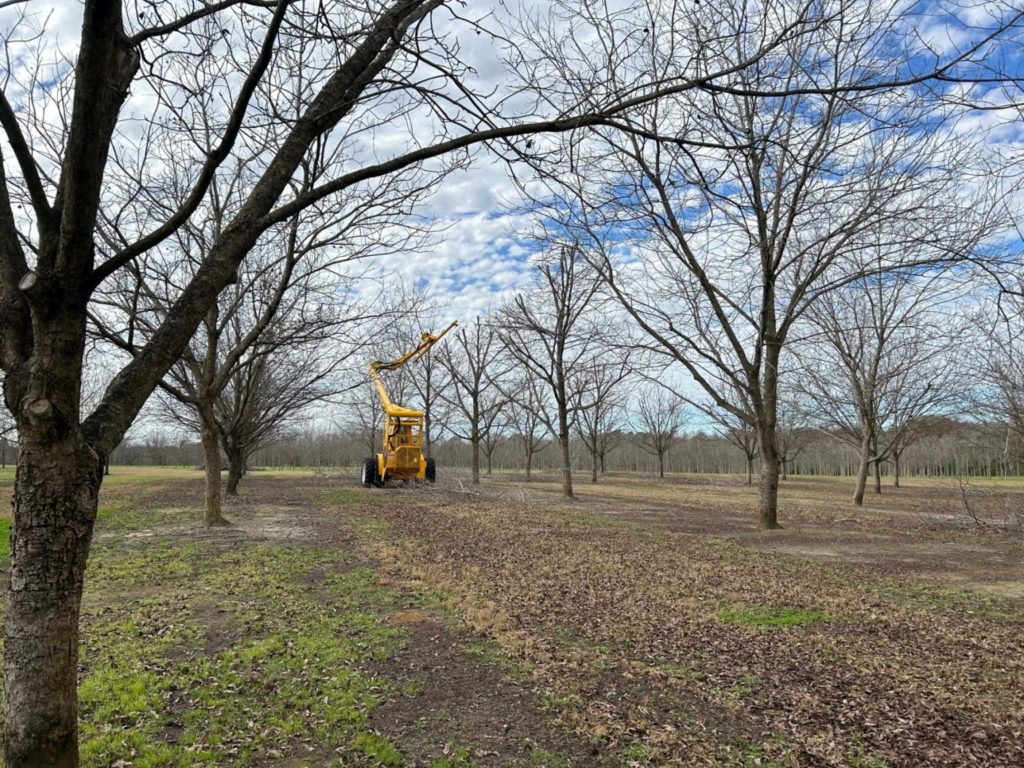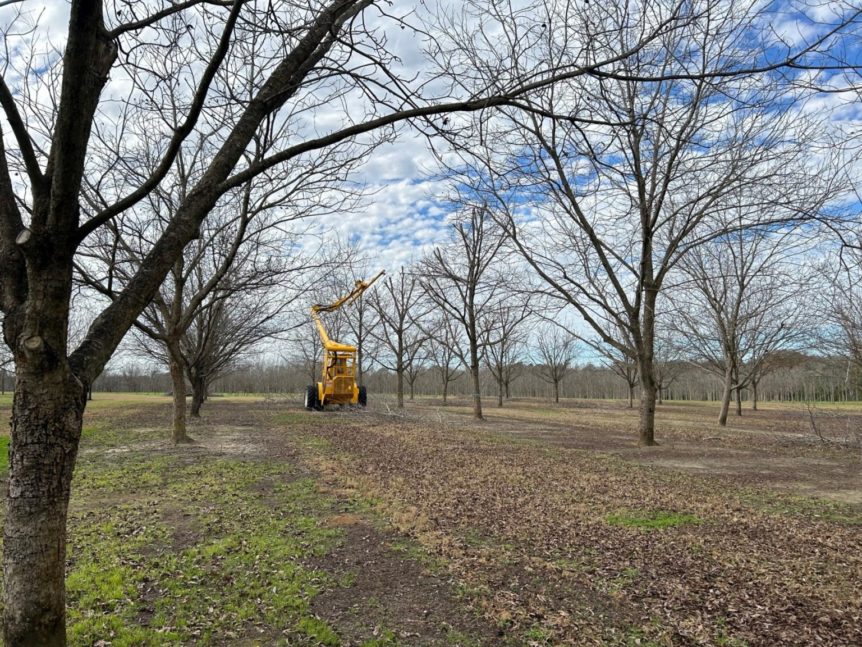
By Clint Thompson
Pecan tree hedging is important to the sustainability of the tree long-term. Whether Southeast growers implement the practice during the dormant or summer season is up to the farmer, says Lenny Wells, University of Georgia Extension pecan specialist.
“From as far as the tree is concerned, the way it produces and responds, there’s no real difference between summer and dormant hedge pruning; same yields, same quality,” said Wells, who highlighted why producers may prefer to hedge during the dormant season. “The only issue is it creates quite a mess when you go in there and hedge. If you’re having to clean that up in the summer, when you’re also needing to spray and you’re needing to mow and you’re needing to herbicide and all of these other activities in the orchard at that time, it makes it hard to do if you’ve got that mess to clean up out there.”
Wells said hedging is a practice that is normally implemented every two out of three years. He focused on how the practice helps the trees.
“Hedge pruning is when we go down a certain distance from the trunk all the way down the tree row, usually about seven feet or so out from the trunk, and we’ll cut off everything that extends beyond that point. We’ll top that tree, no higher than 40 feet,” Wells said.
“It brings the size of the tree down and makes a more compact tree which has a lot of advantages, in terms of water efficiency. The tree can better fill those nuts and size those nuts. You get better spray coverage, because you’ve got a smaller tree to spray, and you get less wind damage.”










